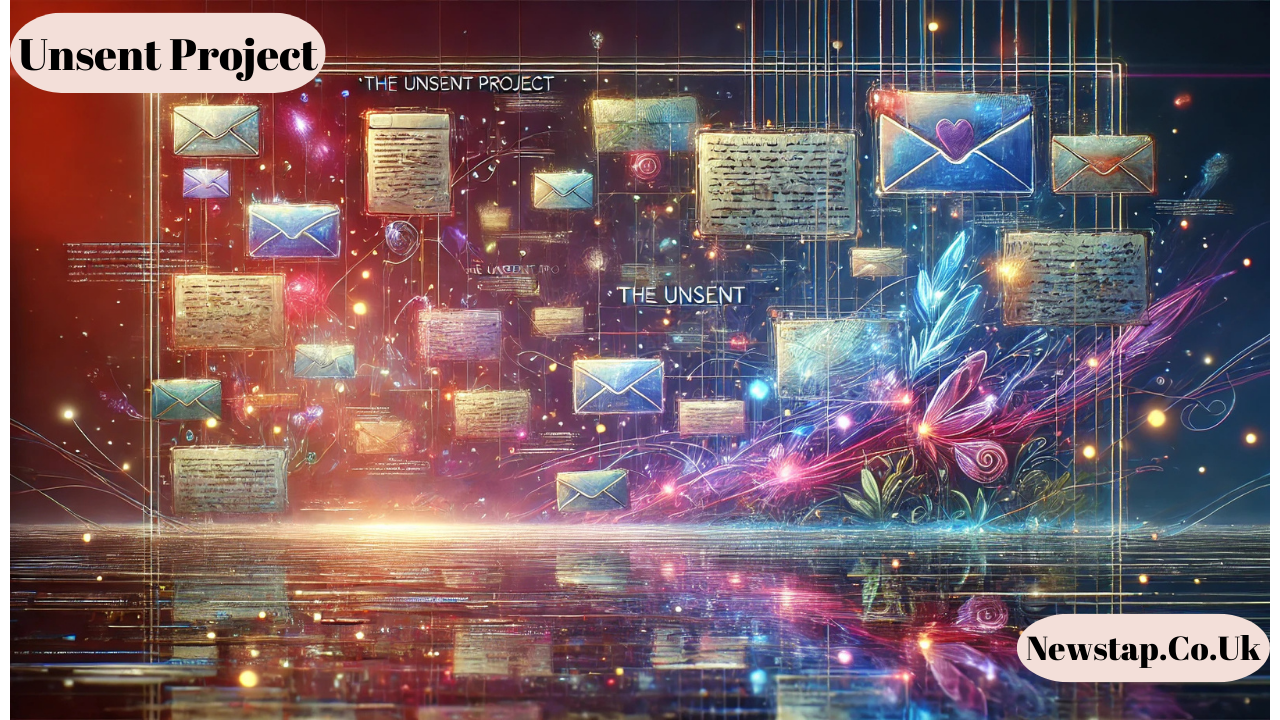The Unsent Project, a creative initiative that captures raw emotions and untold stories, has garnered significant attention for its unique approach to exploring human experiences. This project delves into messages that were never sent, reflecting on relationships, heartbreak, love, and unspoken feelings. In this article, we uncover the significance of the Unsent Project, its origins, and its impact on the individuals who engage with it.
What is the Unsent Project?
The Unsent Project is a platform that allows individuals to share messages they have written but never sent. These unsent messages are directed at former lovers, friends, or others who have deeply impacted their lives. The project’s anonymity and ability to capture unfiltered emotions make it unique. Contributors can express their thoughts without fear of judgment, creating a safe space for catharsis and introspection.
Often displayed as a collage or gallery of text, the messages are categorized by the sender’s perception of the recipient’s favorite color. This added layer of symbolism adds depth to the messages, revealing the emotional associations individuals attach to colors and memories.
Origins of the Unsent Project
The Unsent Project was founded by artist Rora Blue. Initially conceived as a way to explore love and loss through color, the project quickly evolved into a broader exploration of human emotions. The idea of connecting anonymous messages with colors introduced an innovative way of expressing emotions visually and textually.
Over the years, the Unsent Project has gained a massive following, with thousands of submissions from people around the world. Its growth demonstrates a universal need for self-expression and the acknowledgment of feelings that often remain hidden.
Why Do People Participate in the Unsent Project?
Participating in the Unsent Project offers emotional relief and a sense of closure. For many, writing a message they never intend to send allows them to confront feelings they may have been avoiding. It also provides an opportunity to reflect on the relationships and events that shaped their lives.
Some common motivations for contributing to the project include:
- Seeking Closure: Writing to someone without expecting a response helps individuals process unresolved emotions.
- Anonymity: The anonymous nature of the project creates a safe environment for expressing vulnerable feelings.
- Connection: Reading other participants’ messages fosters a sense of solidarity, showing that others have experienced similar emotions.
Emotional Themes in the Unsent Project
The messages in the Unsent Project reflect a wide range of emotions and experiences. Some of the most common themes include:
1. Love and Longing
Many messages express unspoken love or affection for someone. These messages often highlight the pain of unrequited love or the regret of not expressing feelings in time.
2. Heartbreak and Loss
Messages of heartbreak and grief are prevalent, capturing the aftermath of broken relationships, death, or distance. These unsent words convey the sorrow of missing someone who is no longer in one’s life.
3. Regret and Apologies
Regret is a recurring theme in the Unsent Project. People often use the platform to apologize for their actions, acknowledging their mistakes while lamenting missed opportunities for reconciliation.
4. Gratitude and Appreciation
Not all messages are rooted in sadness. Some express gratitude for the positive impact someone had on their life, even if the relationship has ended.
5. Anger and Frustration
For others, the project serves as an outlet to vent anger or frustration. These messages provide a way to release negative emotions in a constructive manner.
The Role of Colors in the Unsent Project
One of the defining aspects of the Unsent Project is its use of colors. Contributors associate their messages with a specific color, often reflecting their emotional connection to the recipient. For instance, a message to someone associated with red might signify passion, while blue might represent tranquility or sadness.
This creative use of color adds another layer of meaning to the project, encouraging participants and viewers to think about the emotions tied to specific hues.
Impact of the Unsent Project
The Unsent Project has had a profound impact on both contributors and its audience. For contributors, the act of sharing unsent messages provides therapeutic benefits. It allows them to acknowledge and release emotions that might otherwise remain bottled up.
For the audience, reading these messages creates a sense of shared humanity. The project demonstrates that, despite cultural or geographical differences, people experience similar joys, pains, and struggles.
Mental Health and Emotional Awareness
The Unsent Project also contributes to broader conversations about mental health. By giving people a platform to express their feelings, it highlights the importance of emotional honesty and self-reflection. It encourages individuals to confront their emotions instead of suppressing them.
Criticism and Challenges
While the Unsent Project has been widely praised, it is not without its challenges. Some critics argue that focusing on unsent messages can reinforce negative emotions or prevent individuals from moving on. Additionally, the anonymity of the project means it can occasionally include hurtful or inappropriate content.
However, supporters contend that the benefits of self-expression outweigh these concerns. They emphasize the project’s role in providing a safe space for individuals to explore their feelings.
How to Contribute to the Unsent Project
Contributing to the Unsent Project is simple and accessible. Participants write their messages and submit them anonymously, often through an online platform or social media. The project welcomes submissions from people of all backgrounds, ensuring a diverse collection of stories and emotions.
Frequently Asked Questions (FAQs)
What is the purpose of the Unsent Project?
The Unsent Project aims to provide a platform for individuals to express unspoken feelings and find emotional release.
Who created the Unsent Project?
The Unsent Project was created by artist Rora Blue, who envisioned it as a way to explore emotions through unsent messages and color associations.
Why are colors used in the Unsent Project?
Colors are used to represent the sender’s emotional connection to the recipient, adding a visual layer of meaning to the messages.
Can I submit a message anonymously?
Yes, all submissions to the Unsent Project are anonymous, ensuring contributors feel safe expressing their feelings.
What types of messages are included in the Unsent Project?
The messages range from expressions of love, regret, and gratitude to anger and heartbreak, reflecting the diverse spectrum of human emotions.
Conclusion
The Unsent Project is a testament to the power of words and the human need for emotional expression. By offering a space for unsent messages, it allows individuals to confront their feelings, seek closure, and connect with others through shared experiences.
Whether viewed as an artistic endeavor or a therapeutic tool, the Unsent Project continues to resonate deeply with people around the world, showcasing the enduring impact of love, loss, and self-expression.
Also Read: Understanding Cosmetic Bonding: Transforming Your Smile in London



